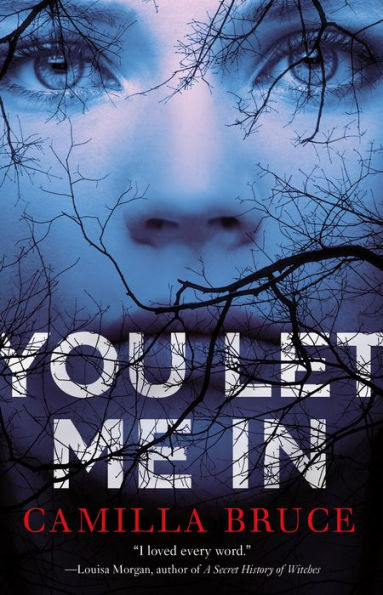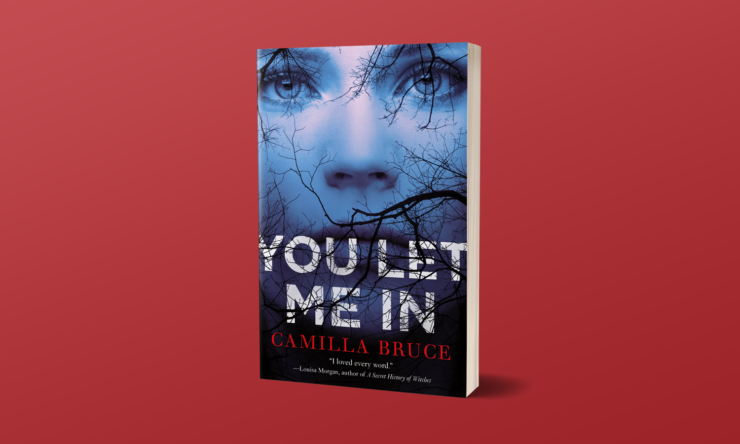By the time her niece and nephew arrived on her doorstep, Cassandra Tipp had been missing for a year. Janus and Penelope were not searching for her, no, they were there to claim their inheritance. To do that they had to read the manuscript she left for them. What they read would change their lives forever.
It all began when Cassandra was young. Despised by her mother and sister, ignored by her father and brother, Cassie was all alone in the world. Well, not entirely alone. A terrifying creature she called Pepper-Man after his strange scent shadows her during the day and drinks her blood at night. He was human once long, long ago, but now he is a dead thing, a faerie, a monster: “His skin was gray and gnarled, black warts clustered at his joints, his long white hair hung nearly to his knees, ragged and dry as old hay.” No one else can see him except her but they can be affected by him.
To protect others from his violence and increasing intimate attention, she pushes them away by acting violent herself. Harrowing events swirl around her like a hurricane, events the humans blame her for and the faeries dismiss as unimportant. Her family turns on her, the town gossips about her, and eventually she knows no other way to behave than as the bad girl everyone says she is. She’s isolated and alone with only Pepper-Man and his coterie of monstrous faerie compatriots to turn to. When her husband, brother, and father are murdered in gruesome ways, all eyes turn to Cassie. Is she confused, her mind ravaged by years of brutal childhood trauma or are the faeries as real as they are bloodthirsty? Who killed those men and why? And what really happened to Cassandra Tipp?
Buy the Book


You Let Me In
For some readers, You Let Me In will be an intense thrill ride, an addictive, frightening horror tale of manipulation and vengeance. They will be enchanted by Camilla Bruce’s writing style and goggle at the intriguing characters. The story will grip them in its talons and make them unable and unwilling to put it down. Bruce’s take on faeries is fascinating and unsettling. They aren’t cute little pixies or tall and ethereal but creatures made of death and blood and destruction. The ways in which they influence the world around Cassandra are as horrifying as they are provocative.
Unfortunately, for me the rest of the novel fell short of its goals. There are many little issues with You Let Me In, but they are all tied to one big one: Cassie. The story is told from Cassandra’s perspective through a manuscript she wrote, but it’s written as if she’s speaking directly to the readers, in her case Janus and Penelope specifically. Now, I read a lot of young adult fiction and short speculative fiction, so I’m very comfortable with different narrative techniques. My frustration has less to do with the second person POV itself than how exacerbates deeper issues revolving around the main character.
Ferdinand describes Cassie’s attitude as flippant when it comes to serious topics, while she thinks herself pragmatic. In her manuscript she dismisses her sister as a spiteful Mean Girl, her brother as a yellow-bellied weakling, and her mother as a heartless harpy, yet toward her father she is emotionless and indifferent even though the text implies (in a roundabout way) that he is capable of extreme violence toward her. It’s complicated and messy in an intriguing way, but these feelings are never explored with any depth. On one hand, I enjoyed how Camilla Bruce showed Cassandra evolving from a little girl desperate for her mother’s love and father’s attention to a woman who cut off (or allowed someone else to cut off) her emotions as a defense mechanism against further pain. On the other hand, it was hard to get invested in a woman who stated repeatedly how uninvested she was in the story she was telling.
Because we are in Cassie’s perspective exclusively, nearly every character who is not her is about as robust as cardboard. The only other people she has even the most fleeting interest in besides herself are Pepper-Man and Mara, meaning they are the only ones who get any personality shading. Even her “love” for the two fairies seems half-hearted at best. Limited as they are, they are the only ones who are granted character development; no one else rises above surface level trope. Plot-wise Dr. Martin, her brother Ferdinand, and her father are crucial, but we know almost nothing about them other than a few small details because Cassie knows nothing about them. Other characters are little more than plot devices designed to give Cassie something to rage at or willfully ignore. Janus and Penelope in particular are such non-entities that without Cassie occasionally mentioning them I would not have even remembered they existed.
Cassandra is uninterested in exploring whether her interpretation of events is real or if Dr. Martin’s theory that her mind found an unusual way to process childhood trauma is actually correct. It’s clear a man did terrible things to her, repeatedly and for years, and it doesn’t really matter whether the man was human or fairy. But what do readers do with a narrator who insists abuse wasn’t abuse (or refuses to believe it was)? Bruce offers no answers, indications, or hints either way. If we weren’t trapped in Cassie’s head all the time, it would be easier to question her truth. But whatever skepticisms arise never fully resonate because Cassie insists that everything is true—and because the other characters are so flimsy and undeveloped. That would be less of a problem if You Let Me In were not marketed as a thriller. Without doubts and distrust there is no mystery or suspense, and without mystery or suspense there is no thriller. You Let Me In makes for an engrossing and chilling dark fantasy; as a thriller not so much.
Lastly, I want to take this opportunity to once again implore publishers to use content/trigger warnings. They help ease the reader into the story and prepare them for material they may not be able to process when confronted with it suddenly. Had I not been wearing my reviewer hat, I would not have been able to compartmentalize my own triggers, but even still this was a hard read for me. There are many, many aspects of this book that many, many readers will struggle with, including child abuse, molestation, grooming, sexual assault, animal abuse, torture. Publishers, be nice to your readers! Use content/trigger warnings!
You Let Me In has a novella’s worth of premise stretched into a novel’s length. Fortunately, that premise is highly compelling. Despite the structural issues, there are enough clever ideas to appeal to readers who like more questions than answers and disturbing scenarios. I wanted a thriller and got instead a dark fantasy, but at least it was satisfactorily haunting, ominous, and moody. It moves quickly enough to keep the reader from getting bored. And although it doesn’t hold up to critical analysis as well as it could, many readers will nevertheless find it an entertaining read. If nothing else, it’s worth a try.
You Let Me In is available from Tor Books.
Alex Brown is a teen services librarian by day, local historian by night, author and writer by passion, and an ace/aro Black woman all the time. Keep up with her on Twitter and Insta, or follow along with her reading adventures on her blog.










